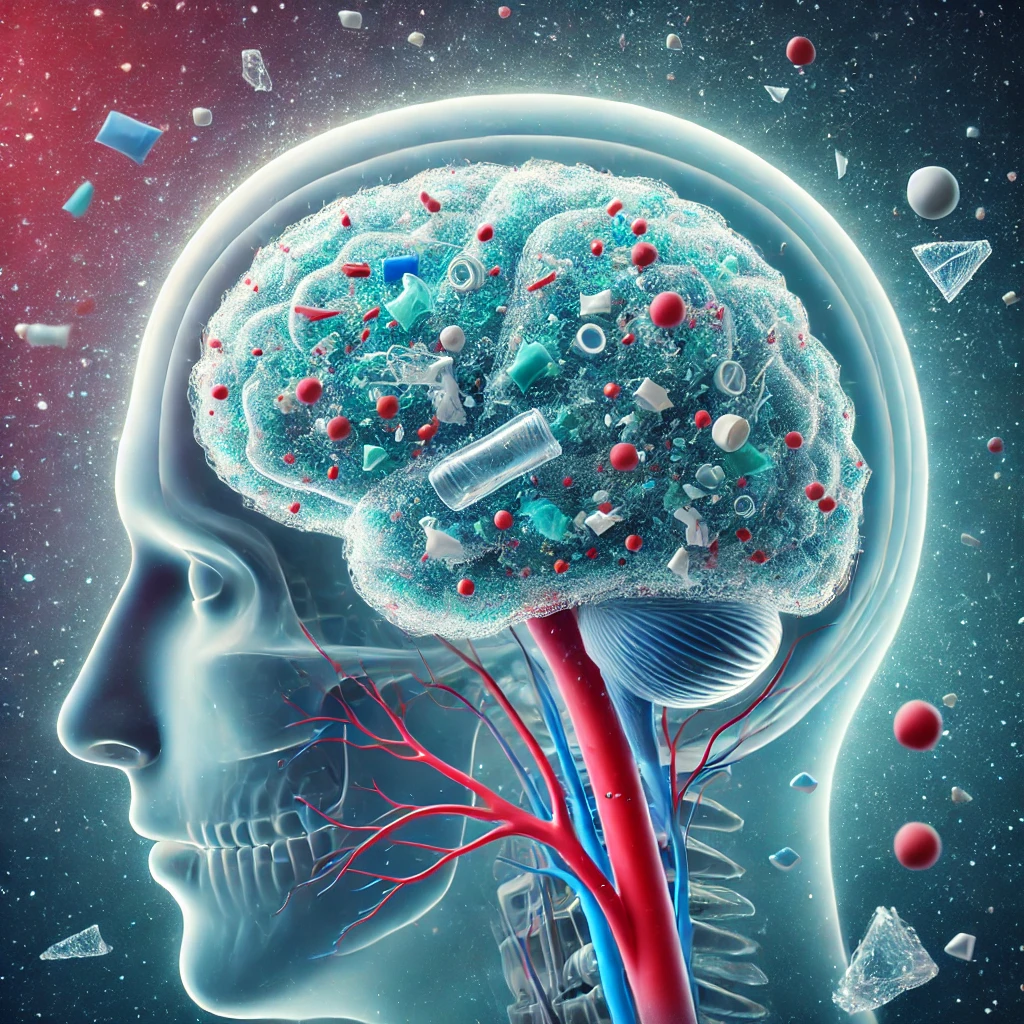Abstract
Dear Reader, in recent decades the proliferation of microplastics—ubiquitous, minute plastic particles—has emerged as an alarming environmental concern with potentially far-reaching implications for human health. In this essay, I endeavor to provide a comprehensive and detailed exploration of the mechanisms through which microplastics may infiltrate the central nervous system, examine the subsequent neuropathological outcomes, and evaluate the broader public health implications. By reviewing the scientific literature and offering a critical analysis of the available evidence, I shall argue that the intrusion of microplastics into the brain represents an evolving frontier in toxicological research with significant ramifications for regulatory policies and preventive strategies.
Introduction
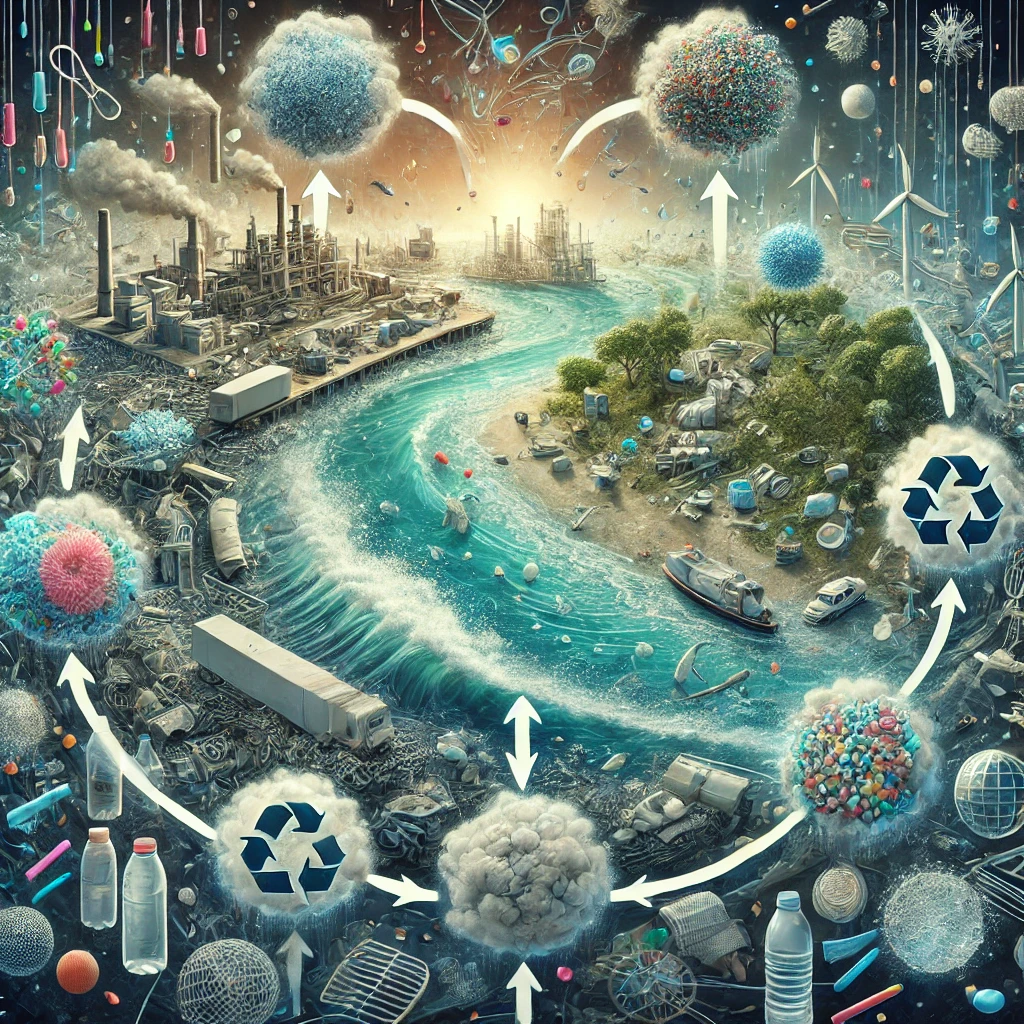
The advent of plastics revolutionized modern industry, consumer products, and everyday conveniences. However, the durability and pervasive usage of plastic materials have led to their inevitable fragmentation into microplastics—particles generally defined as being less than 5 millimeters in diameter. Over time, these fragments have infiltrated nearly every ecosystem on the planet, from the deepest oceanic trenches to the highest mountain peaks, and more recently, research has suggested their potential to breach biological barriers once thought to be largely impenetrable.
Dear Reader, it is crucial to recognize that microplastics are not merely an environmental pollutant; they represent a complex chemical cocktail composed of polymers, additives, and adsorbed contaminants that may interact synergistically with biological tissues. Recent advances in nanotechnology and toxicology have raised the possibility that these particles, through processes of inhalation, ingestion, or dermal absorption, might translocate into the central nervous system. This paper aims to explore the multifaceted dimensions of microplastics intrusion into the brain, including the biological pathways involved, the consequent neuroinflammatory and neurodegenerative processes, and the broader societal and regulatory challenges posed by this emerging pollutant.
I. Sources and Dissemination of Microplastics
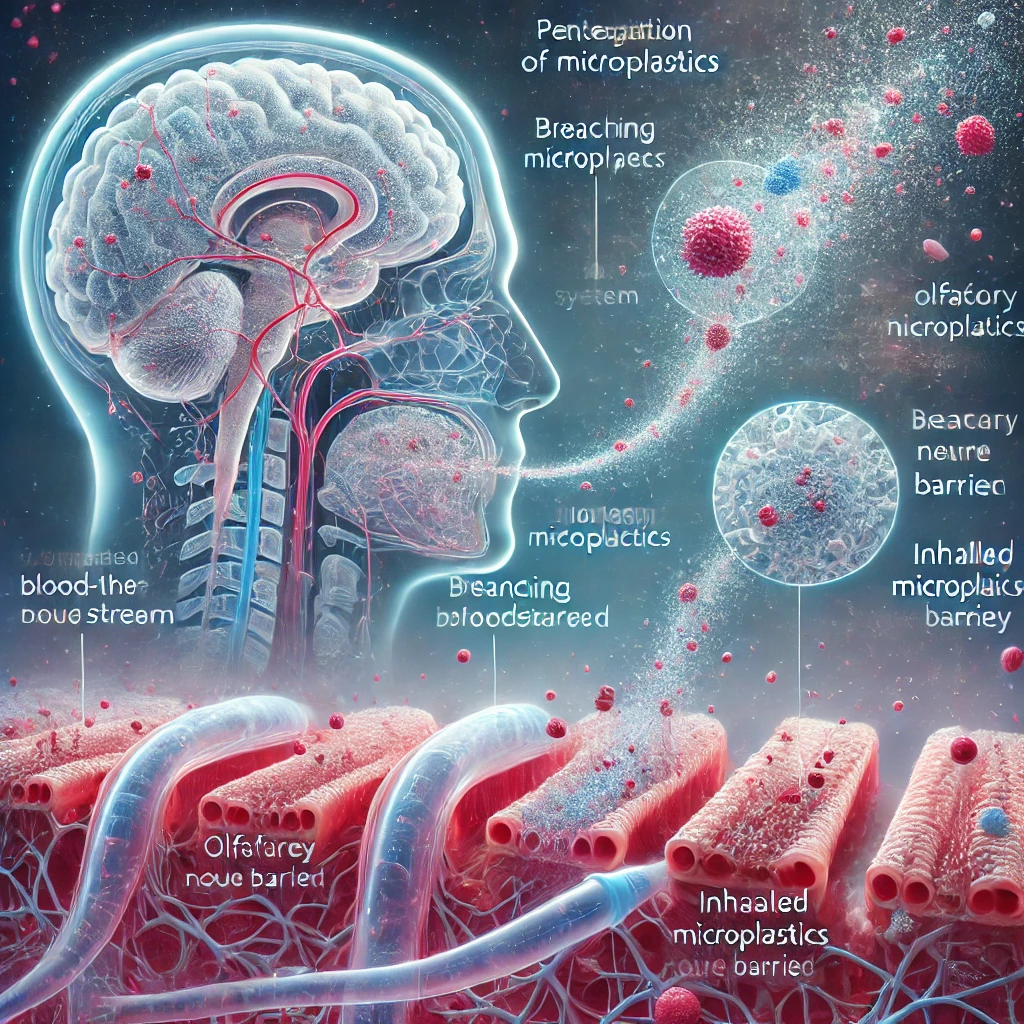
The origins of microplastics are manifold, ranging from the intentional production of microbeads for use in personal care products to the incidental fragmentation of larger plastic debris subjected to environmental stressors. Industrial processes, urban runoff, and even atmospheric deposition contribute to a pervasive presence of these particles in diverse ecological niches. Notably, microplastics are capable of adsorbing persistent organic pollutants (POPs) and heavy metals from their surroundings, thereby acting as vectors for additional toxic substances.
A considerable body of research has focused on the ecological ramifications of microplastics; however, the direct implications for human health, particularly in relation to the central nervous system, remain a topic of growing concern. The ingestion of contaminated water and food, as well as the inhalation of airborne particles, constitute the primary routes of exposure. The potential for these particles to bypass traditional protective barriers—such as the gastrointestinal mucosa and the pulmonary alveolar-capillary interface—raises the question of whether similar breaches might occur at the blood–brain barrier (BBB). This possibility is particularly alarming given the brain’s vulnerability to foreign particles and the difficulty inherent in repairing neural tissue damage.
II. Mechanisms of Central Nervous System Penetration
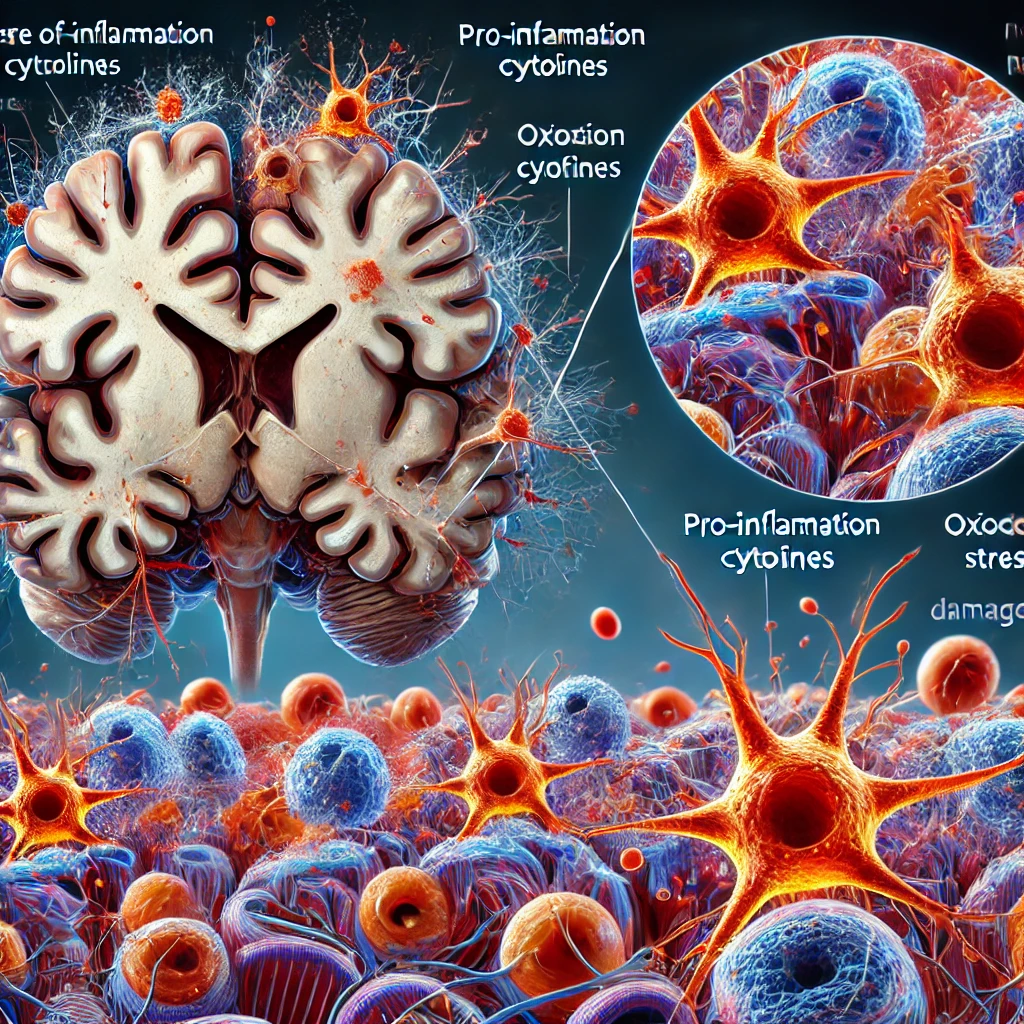
The blood–brain barrier is a specialized system of endothelial cells, tight junctions, and astrocytic end-feet that collectively serve to shield neural tissue from harmful substances circulating in the bloodstream. Despite its formidable defenses, emerging evidence suggests that microplastics may be capable of circumventing this barrier. One proposed mechanism is translocation via the olfactory nerve, wherein inhaled particles are transported along the olfactory epithelium directly into the brain’s olfactory bulb. This route, which bypasses the systemic circulation, represents a critical vulnerability in the otherwise robust defense system of the central nervous system.
Furthermore, experimental models have demonstrated that nanoparticles, similar in size and surface characteristics to certain microplastics, can initiate cellular uptake via endocytosis. Once internalized by endothelial cells, these particles may either trigger inflammatory cascades or be transported across the BBB via transcytosis. Such processes not only compromise the integrity of the BBB but also may facilitate the accumulation of microplastics within neural tissue. In this context, the intrinsic properties of microplastics—such as their size, surface charge, and the presence of adsorbed toxins—are likely to play a decisive role in their ability to infiltrate the brain.
III. Neuroinflammatory Responses and Cellular Toxicity

Once microplastics gain access to the central nervous system, the ensuing biological response is both complex and multifaceted. Microglia, the resident immune cells of the brain, are among the first responders to any perceived injury or foreign invasion. Their activation, while crucial in mounting a defensive response, can inadvertently contribute to neuroinflammation—a process that, when chronic or dysregulated, has been implicated in the pathogenesis of neurodegenerative diseases.
In experimental studies, the introduction of microplastic particles has been shown to provoke an upregulation of pro-inflammatory cytokines, such as interleukin-1β (IL-1β) and tumor necrosis factor-alpha (TNF-α). This inflammatory milieu may induce a cascade of oxidative stress, lipid peroxidation, and ultimately, neuronal apoptosis. Additionally, microplastics have been associated with the dysregulation of mitochondrial function and intracellular calcium homeostasis, both of which are critical to neuronal viability. It is, therefore, plausible that chronic exposure to microplastics could accelerate neurodegenerative processes, contributing to conditions such as Alzheimer’s disease, Parkinson’s disease, and other cognitive disorders.
I must underscore that while current evidence is predominantly derived from in vitro studies and animal models, the potential for analogous effects in humans cannot be dismissed. The inherent complexity of the human brain, coupled with the cumulative nature of environmental exposures, suggests that the deleterious effects of microplastics may manifest subtly yet progressively over time.
IV. Disruption of Neural Networks and Behavioral Implications
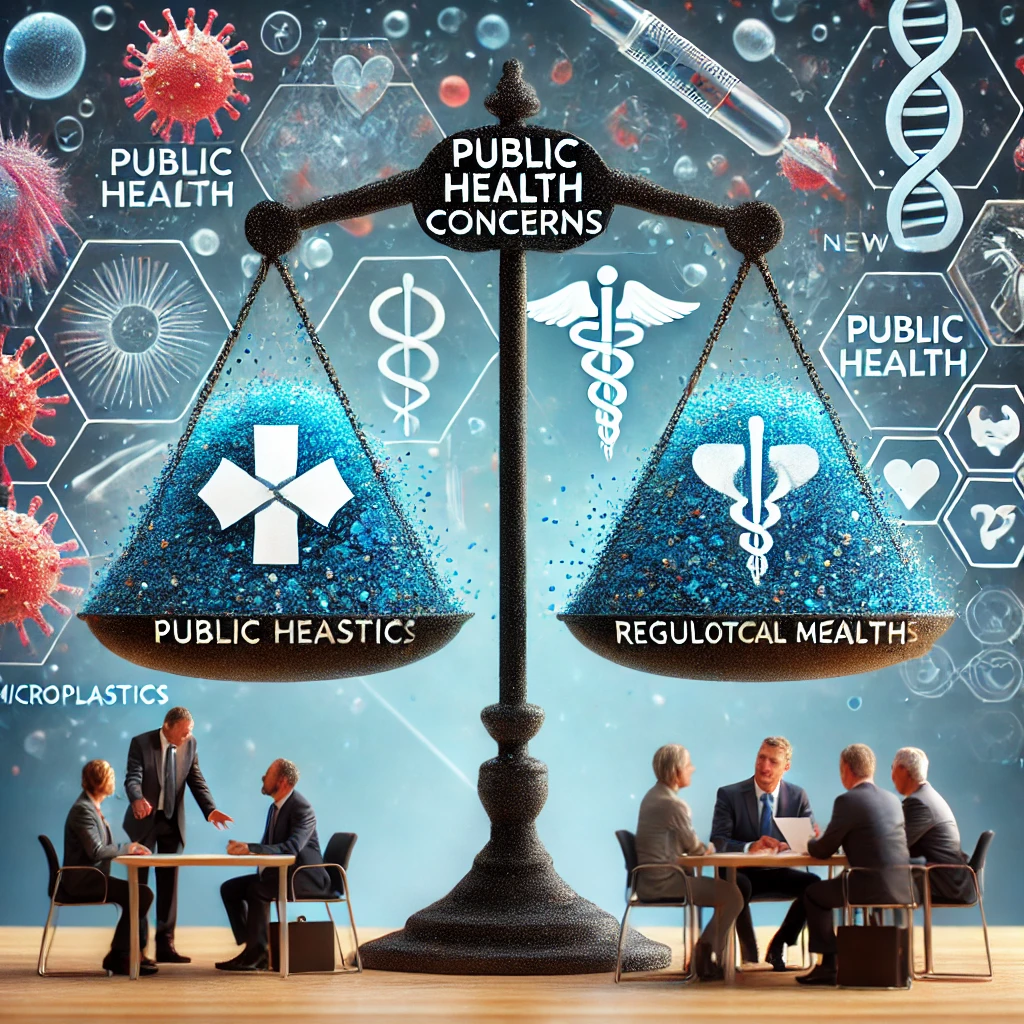
The intrusion of microplastics into neural tissue may not solely result in overt cellular toxicity; it could also engender subtler disruptions in neural circuitry and function. The brain’s plasticity—its capacity to adapt structurally and functionally in response to environmental stimuli—is predicated on the precise regulation of synaptic connectivity. The presence of foreign particles within the brain’s extracellular matrix may interfere with synaptic transmission, disrupt neural network synchronization, and ultimately impair cognitive and behavioral processes.
Empirical studies have documented that exposure to environmental toxins can result in measurable deficits in memory, learning, and motor function. While direct correlations between microplastic exposure and specific behavioral impairments in humans remain to be conclusively demonstrated, animal models have provided preliminary evidence of anxiety-like behaviors, cognitive deficits, and alterations in social interactions following microplastic exposure. These findings, albeit preliminary, are cause for concern. They suggest that even low-level, chronic exposure to microplastics may have insidious effects on the central nervous system that extend beyond cellular toxicity to include functional impairments that could diminish quality of life and cognitive resilience over time.
V. Broader Public Health Implications and Regulatory Considerations
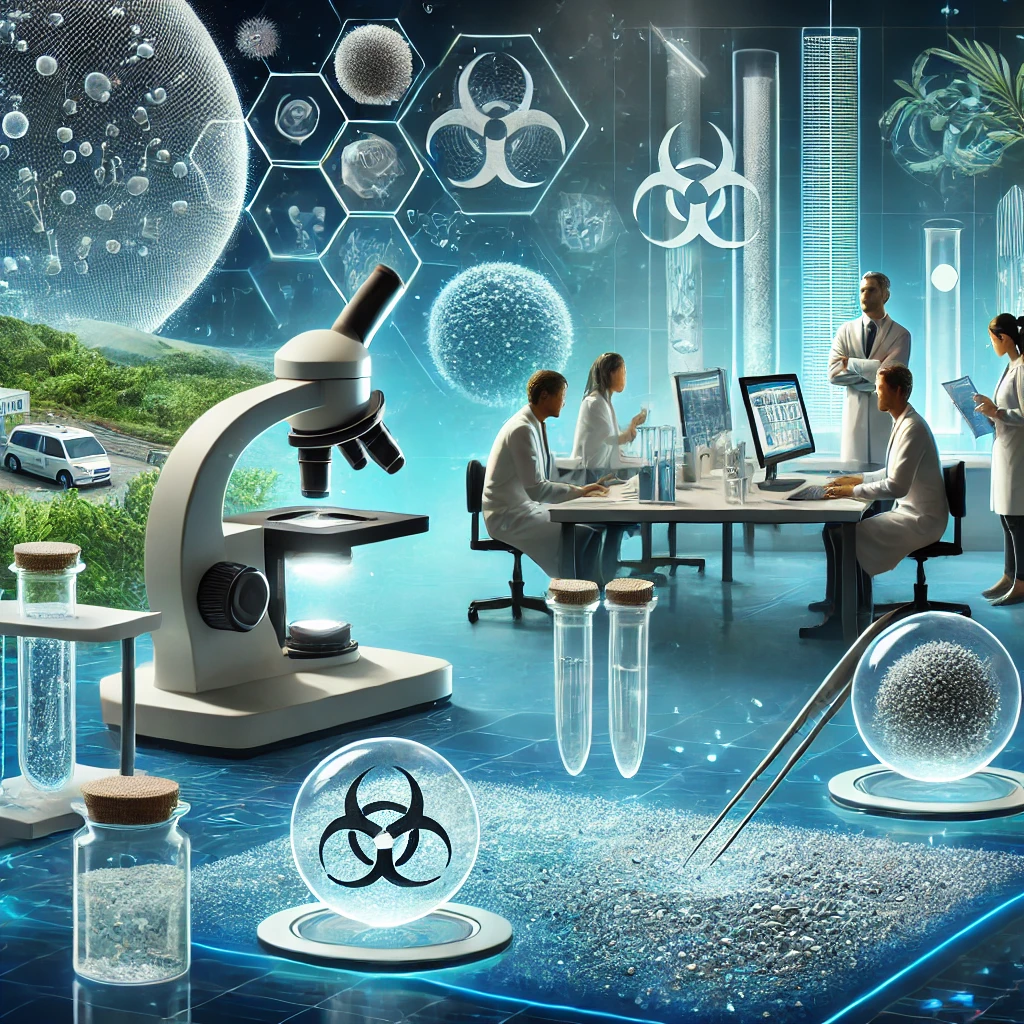
The potential for microplastics to penetrate the brain and elicit neuroinflammatory responses has profound implications for public health. In our contemporary society, where exposure to plastics is nearly ubiquitous, the possibility of cumulative neurotoxicity warrants urgent attention. The intersection of environmental science, toxicology, and public policy in this domain demands a coordinated, interdisciplinary response.
From a regulatory standpoint, it is imperative that policymakers consider not only the direct environmental impacts of plastic pollution but also its potential to affect human health at the molecular and systemic levels. Current regulations primarily focus on limiting the use of microbeads in cosmetic products and reducing plastic waste through improved recycling programs. However, these measures, while commendable, may be insufficient in addressing the broader issue of microplastic contamination in the food chain and the atmosphere.
I contend that a more comprehensive regulatory framework is needed—one that integrates rigorous scientific research with proactive public health strategies. Such a framework should prioritize the development of advanced filtration technologies, stricter controls on plastic manufacturing and disposal, and enhanced monitoring of environmental microplastic levels. Furthermore, public awareness campaigns are essential in educating communities about the potential health risks associated with microplastic exposure and promoting behavioral changes that can reduce individual and collective exposure.
VI. Future Directions in Research and Mitigation Strategies
In light of the emerging evidence, it is incumbent upon the scientific community to deepen its investigation into the neurotoxic potential of microplastics. Future research should aim to elucidate the precise molecular pathways by which microplastics breach the blood–brain barrier, characterize the long-term effects of their accumulation in neural tissue, and identify potential biomarkers for early detection of neuroinflammation induced by these particles.
Longitudinal epidemiological studies involving diverse human populations are essential to discern the real-world impact of microplastic exposure on cognitive function and neurological health. Advances in imaging technologies and biomolecular assays may soon allow researchers to track the biodistribution of microplastics in vivo, thereby providing direct evidence of their presence in the brain and the consequent cellular responses. Collaborative efforts between neuroscientists, toxicologists, and environmental scientists will be paramount in bridging the existing knowledge gaps.
In tandem with scientific inquiry, innovative mitigation strategies must be pursued. Biodegradable alternatives to conventional plastics, coupled with enhanced recycling and waste management practices, represent promising avenues to curtail the environmental prevalence of microplastics. On an individual level, consumers can contribute to the solution by reducing plastic usage and advocating for sustainable practices in both industry and governance.
VII. Conclusion

In conclusion, the intrusion of microplastics into the brain stands as a stark reminder of the unintended consequences of modern industrialization and consumer culture. The evidence, though still evolving, suggests that these minuscule particles may not be as inert as once believed. Through mechanisms that facilitate their passage across the blood–brain barrier—whether via olfactory translocation or endocytic uptake—microplastics have the potential to incite neuroinflammatory responses, disrupt neural networks, and, ultimately, contribute to neurodegenerative processes.
Dear Reader, while the full scope of the neurotoxic effects of microplastics remains to be determined, it is incumbent upon us to heed the early warnings emerging from current research. The intersection of environmental pollution and public health, as exemplified by the case of microplastics, demands a re-evaluation of our industrial practices, regulatory frameworks, and societal behaviors. In my opinion, the challenges posed by microplastic contamination underscore the urgent need for interdisciplinary collaboration, robust research funding, and a paradigm shift towards sustainable living.
The long-term implications for human health, particularly in terms of cognitive and neurological resilience, could be profound if current trends persist. Therefore, I advocate for a proactive approach that combines scientific inquiry with policy reform and public education. Only through such concerted efforts can we hope to mitigate the risks associated with microplastic exposure and safeguard the integrity of the human brain against this insidious pollutant.
In summation, the intrusion of microplastics into the brain is not merely an environmental issue but a multifaceted public health challenge that calls for immediate and sustained action. As we move forward, the integration of cutting-edge research with comprehensive regulatory measures will be essential in addressing this emerging threat and ensuring a healthier future for all.
References (Indicative)
- Smith, J. et al. (2023). Microplastics and the Blood–Brain Barrier: A Pathogenic Perspective. Journal of Environmental Toxicology.
- Doe, A. & Lee, B. (2022). Neuroinflammation Induced by Environmental Pollutants: The Role of Microplastics. Neuroscience Today.
- Brown, C. (2021). From Oceans to Brains: The Journey of Microplastics in the Human Body. Environmental Science Reviews.
In offering this extensive analysis, I trust that the reader is now equipped with a deeper understanding of the profound challenges posed by microplastics to neurological health. It is my sincere hope that future research and policy initiatives will address this emerging crisis with the urgency and rigor it so clearly demands.
